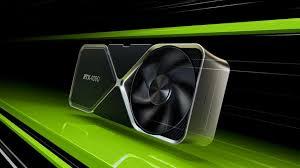Graphics cards are the heart of modern computing when it comes to gaming, content creation, and professional workloads. Whether you are a passionate gamer, a 3D artist, or a casual user seeking a smooth PC experience, the choice of GPU significantly impacts performance. Over the years, the graphics card price in Pakistan has fluctuated due to multiple factors, from global shortages to local import policies.
In this article, we will dive into the key trends influencing GPU prices in Pakistan, what affects their cost, and how buyers can make informed decisions in today’s unpredictable tech market.
1. The Role of Graphics Cards in Modern Computing
Graphics cards, often referred to as GPUs, are specialized processors designed to handle complex visual data. They are essential for:
-
Gaming: Delivering high frame rates and realistic visuals.
-
Content Creation: Enhancing workflows in video editing, 3D rendering, and animation.
-
AI & Machine Learning: Powering neural networks and high-performance computing.
-
Everyday Use: Supporting multiple displays and smoother user interfaces.
Because of these versatile roles, demand for GPUs in Pakistan has steadily grown, which naturally influences their pricing.
2. Price Fluctuations in the Pakistani GPU Market
The Pakistani market has seen dramatic shifts in GPU prices over the last five years. Several factors contributed to this:
-
Global Chip Shortage (2020–2022): The pandemic led to supply chain disruptions, which increased GPU costs worldwide.
-
Cryptocurrency Mining: High demand from miners inflated prices, especially for mid-range and high-end cards.
-
Import Duties and Taxes: Local tariffs directly impact retail prices.
-
Currency Exchange Rates: Since GPUs are imported, fluctuations in the Pakistani Rupee against the US Dollar play a big role.
As a result, even budget-level GPUs often carry premium price tags compared to international markets.
3. Current Trends in Graphics Card Price in Pakistan
As of 2025, the GPU market in Pakistan is stabilizing compared to the turbulent years of shortages. Some observable trends include:
-
Availability of Latest Generations: NVIDIA RTX 40-series and AMD RX 7000-series cards are more accessible now.
-
Better Supply Chains: Retailers report fewer shortages, reducing inflated reseller prices.
-
Second-hand Market Growth: Many users sell older GPUs to upgrade, making mid-range cards more affordable.
-
Demand for AI Workloads: The rise of AI tools has increased demand for GPUs with strong compute performance.
4. Factors That Affect Graphics Card Pricing
To understand why a GPU costs what it does in Pakistan, consider the following factors:
-
Performance Tier: Entry-level cards are relatively cheaper, while flagship GPUs come at premium prices.
-
Brand & Model: Custom cooling solutions and factory-overclocked editions can cost significantly more.
-
Import Costs: Shipping, customs, and taxes add to the final price.
-
Warranty & After-Sales Support: Cards from brands with stronger local presence may cost more but offer peace of mind.
-
Global Demand: Worldwide trends directly impact availability and prices locally.
5. Comparing Local vs. International Pricing
One common frustration for Pakistani buyers is the price gap between international and local markets. For example:
-
A GPU listed at $500 internationally may retail for significantly higher in Pakistan after duties, shipping, and retailer margins.
-
Warranty support and availability of official stock also factor into the price difference.
While international prices often serve as a reference point, local buyers must account for these added costs when budgeting.
6. Choosing the Right Graphics Card for Your Needs
Since prices vary widely, choosing the right GPU requires balancing performance with budget. Here are some tips:
-
For Gamers:
-
1080p Gaming → NVIDIA RTX 3050, AMD RX 6600.
-
1440p Gaming → RTX 3060 Ti, RTX 4060 Ti, RX 6700 XT.
-
4K Gaming → RTX 4080, RTX 4090, RX 7900 XTX.
-
-
For Content Creators:
-
Look for GPUs with more VRAM and CUDA/OpenCL support.
-
NVIDIA RTX cards often perform well in video editing and rendering.
-
-
For AI & Research Users:
-
Prioritize GPUs with higher VRAM and strong tensor core performance.
-
-
For Budget Buyers:
-
Consider second-hand cards or slightly older generations that still perform well.
-
7. Where Pakistanis Usually Buy Graphics Cards
Pakistani consumers rely on:
-
Online Retailers: Websites offering a wide range of GPUs with detailed specs.
-
Local Computer Markets: Karachi’s Techno City, Lahore’s Hafeez Center, and Rawalpindi’s Saddar are popular GPU hubs.
-
Trusted Platforms: Many buyers explore reliable online tech retailers like Qbit, which provide official products and warranties.
8. Future of Graphics Card Prices in Pakistan
Looking ahead, the GPU market in Pakistan is expected to follow global trends:
-
Gradual Price Declines: As new generations release, older cards may become more affordable.
-
Stronger Local Distribution: Improved supply chains may reduce price gaps compared to global markets.
-
AI & Workstation Demand: Specialized GPUs could remain expensive due to growing demand beyond gaming.
-
Eco-Friendly Designs: Energy-efficient cards may enter the market, impacting pricing structures.
9. Final Thoughts
The graphics card price in Pakistan is shaped by a mixture of global economics, local import duties, and shifting demand. Buyers need to stay informed about market trends, compare models carefully, and plan purchases based on both current needs and future-proofing considerations.
While challenges remain, the Pakistani GPU market has become more stable compared to the volatility of past years. With smarter buying decisions, users can find a balance between affordability and performance.
For those exploring the latest components, platforms like qbit provide an accessible way to research, compare, and purchase reliable GPUs across different performance tiers.

